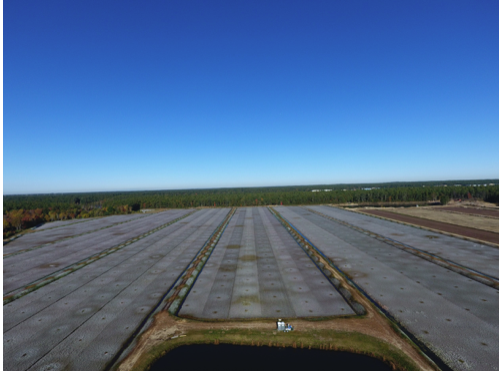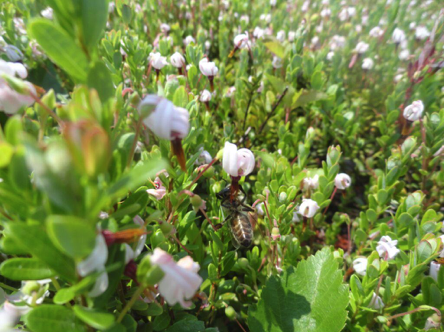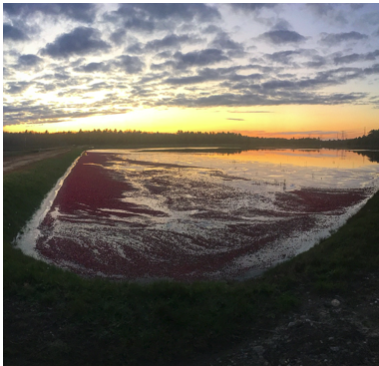The Cranberry Lifecycle
The cranberry life-cycle is like no other and we get questions all the time about how they grow, so we’re going to tell you all about it!
Cranberries are perennials meaning they come back year after year.
From the end of November through March the vines are dormant. There’s still plenty to do around the bogs like maintenance, flooding, sanding and more but that’s a whole different post. For now we’re going to stick with the cranberry life cycle.
April is when the vines emerge from dormancy and the leaves turn from red to green. While the vines are waking up, we have to monitor the weather very closely. If frost is predicted, we have to keep a close eye and make sure the vines do not freeze. Frost can cause growth and developmental issues. To prevent the vines from freezing over, we run our irrigation system. The water actually keeps the vines warm and prevents frost. The irrigation system can be monitored by our phones. We still have to go check to make sure all of the sprinkler heads turn on and there isn’t a blockage somewhere (usually in the middle of the night or wee hours of the morning) but the phone monitoring system is very helpful compared to the old ways of frost watch.

In May, bud break occurs. Frost watch is extremely important during this time. There are many sleepless nights followed by a full day of work. It’s crucial we keep an eye on vine health and to help the vines we apply an organic fish fertilizer. It gives the vines a boost of nutrients naturally. Our dog Stella always seems to find the fishiest smelliest run off of water to roll in.
June the vines start to bloom with light pink/white flowers and the bees come back for pollination. It’s hard to tell from afar but the blooms are beautiful. The bees come from our cousin Roger at Franklin Honey Company and our friends at Wonderful Bees. We have over 200 acres of cranberry vines to pollinate, the local bees can’t do it alone!

July through August the vines are in fruit set and fruit growth stages which means the cranberries are growing and they are green in color. During this time we make sure the vines have plenty of nutrients and water in the summer heat. We also keep an eye out for pesky pests who want to chomp into the cranberries. To avoid pest damage we use an integrated pest management system and follow Global GAP protocols. Global GAP stands for Good Agricultural Practices and is recognized around the world.

September the cranberries are mature and start to color to that deep red cranberry color. Sometimes it takes a little longer than we want for the color to get to “harvest ready”. A few good cool September nights help color the cranberries faster. But we are in New England so we cannot control the weather and some years we have very hot Septembers which push back harvest a few weeks..
October is CRAZY here at the bogs. We are harvesting over 200 acres of our bogs in a few short weeks… and of course we are subject to the weather. In 2018, due to a late start waiting on color we were harvesting into November and chipping ice from our machines! It was not ideal.

After all of the vines have been harvested (about mid November) our processing plant is still running and packaging cranberries for our customers but the vines have done their job and they can begin to go dormant once again. It’s quite the process but it’s certainly worth it to be able to enjoy those delicious and nutritious cranberries all year round!

 BACK TO BLOG
BACK TO BLOG

